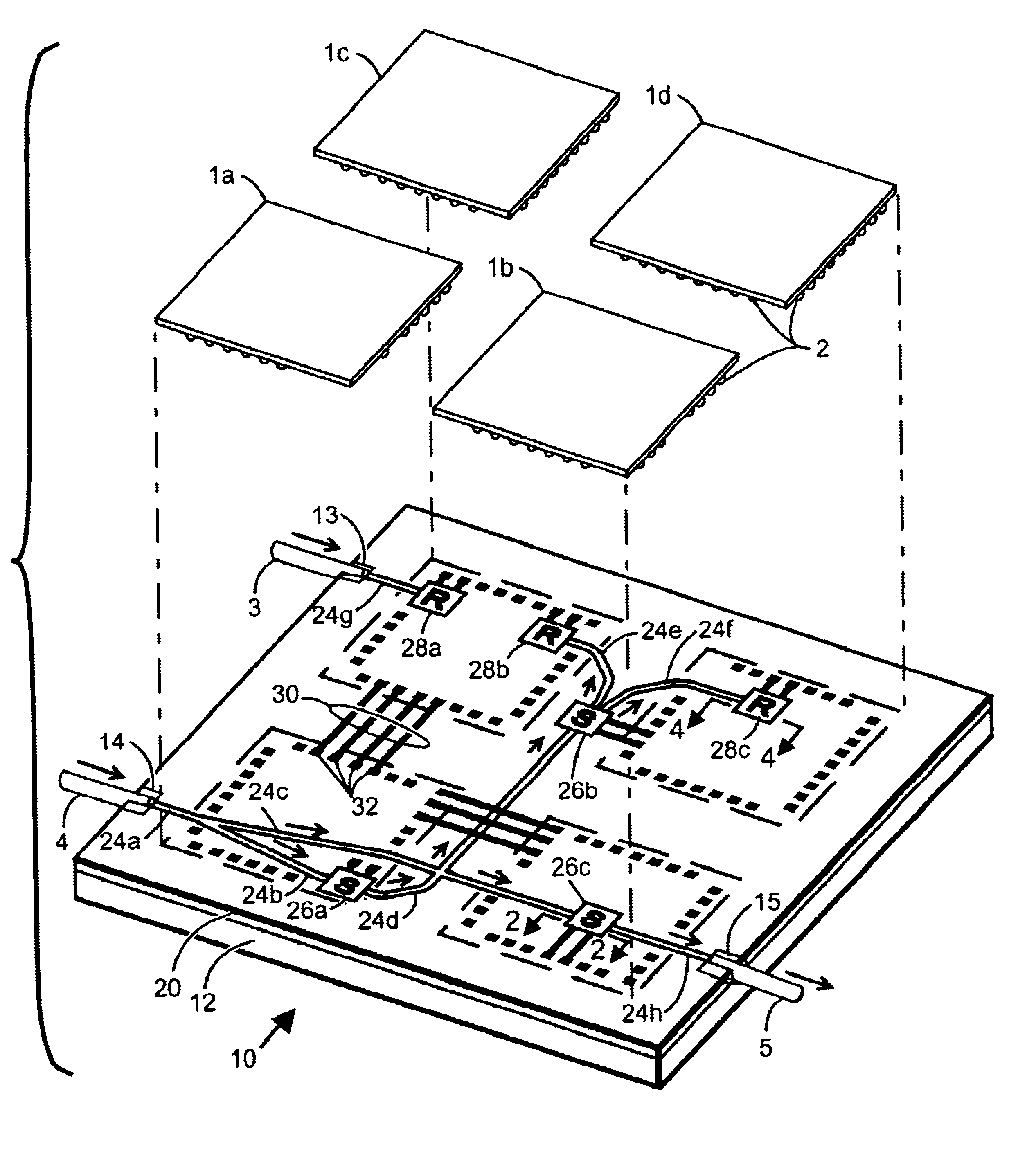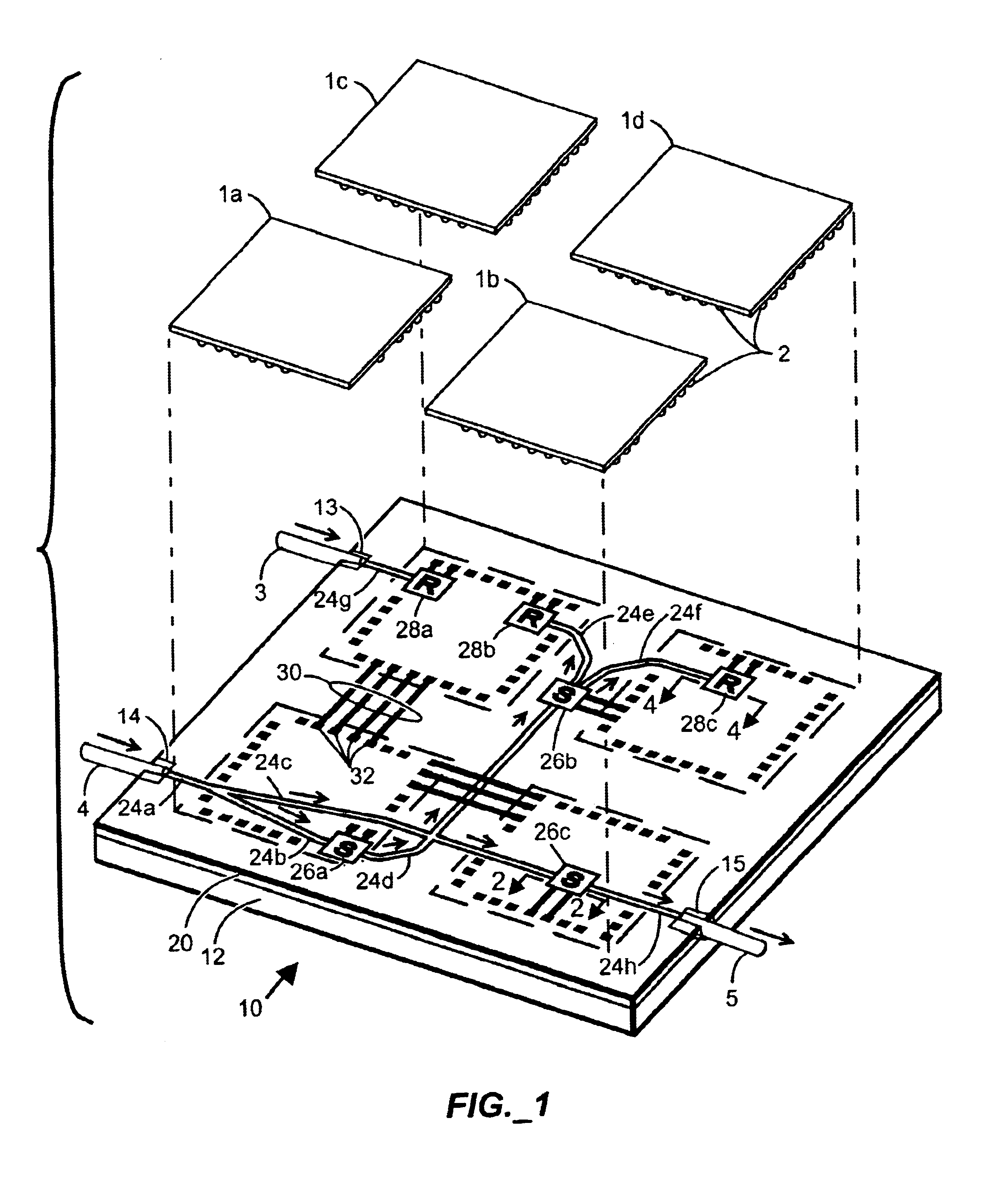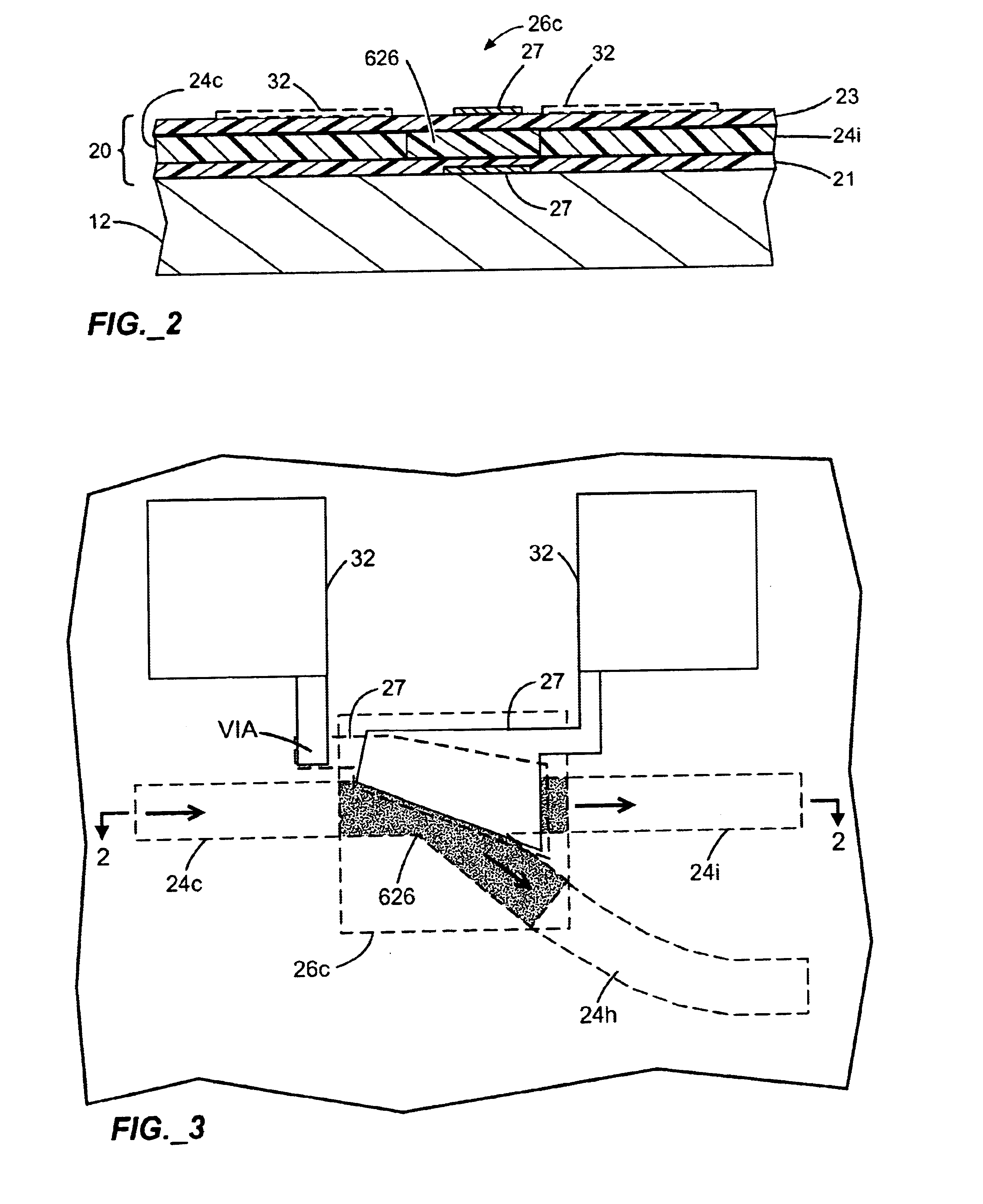Multi-layer opto-electronic substrates with electrical and optical interconnections and methods for making
a technology of optoelectronic substrates and optical interconnections, applied in the field of optoelectronic substrates, can solve the problems of reducing the area requirements of optical interconnections in implementations using light modulators, and affecting the performance of optical interconnections. , to achieve the effect of reducing the area requirements, increasing the power of optical signals, and reducing nois
- Summary
- Abstract
- Description
- Claims
- Application Information
AI Technical Summary
Benefits of technology
Problems solved by technology
Method used
Image
Examples
first embodiment
FIG. 1 shows an expanded perspective view of an opto-electronic (optical-electronic) interconnect substrate according to the present invention at reference number 10. The interconnect substrate 10 takes the form of an opto-electronic multichip module (OE-MCM) substrate that interconnects signal from one or a plurality of I.C. chips 1a-1d, including both inter-chip and intra-chip connections, by both optical links and electrical traces. Substrate 10 comprises a base substrate 12 and an active layer 20. The active layer comprises optical waveguides 24a-24h, opto-electronic switching devices 26a-26c, photo-detector devices 28a-28c, electrical traces 30, and electrical connection pads 32 for the I.C. chips 1. The I.C. chips are flip-chip assembled to active layer 20 and are electrically coupled to the connection pads 32 of layer 20 by a plurality of any type of conventional connectors 2. For the example, as shown in FIG. 1, connectors 2 may comprise solder bumps. The optical waveguides ...
second embodiment
FIG. 6 shows an expanded perspective view of an opto-electronic interconnect substrate according to the present invention at reference number 10′. The interconnect substrate 10′ is similar to substrate 10 shown in FIG. 1, and takes the form of an (opto-electronic multichip module OE-MCM) substrate that interconnects signal from one or a plurality of I.C. chips 1a-1d by both optical links and electrical traces. Common reference numbers have been used to designate common elements of substrates 10′ and 10. As one difference, substrate 10′ uses light emitting devices 36a and 36b in place of the opto-electronic switch devices 26a and 26b of substrate 10. The light emitting devices 36 do not need an outside source of light, such as provided by optical fiber 4 of substrate 10, and thus substrate 10′ does not require optical fiber 4. Device 36 may comprise a light-emitting diode (LED), a laser diode (LD), a vertical cavity surface emitting laser (VCSEL), quantum-well or quantum-dot devices ...
PUM
 Login to View More
Login to View More Abstract
Description
Claims
Application Information
 Login to View More
Login to View More - R&D
- Intellectual Property
- Life Sciences
- Materials
- Tech Scout
- Unparalleled Data Quality
- Higher Quality Content
- 60% Fewer Hallucinations
Browse by: Latest US Patents, China's latest patents, Technical Efficacy Thesaurus, Application Domain, Technology Topic, Popular Technical Reports.
© 2025 PatSnap. All rights reserved.Legal|Privacy policy|Modern Slavery Act Transparency Statement|Sitemap|About US| Contact US: help@patsnap.com



